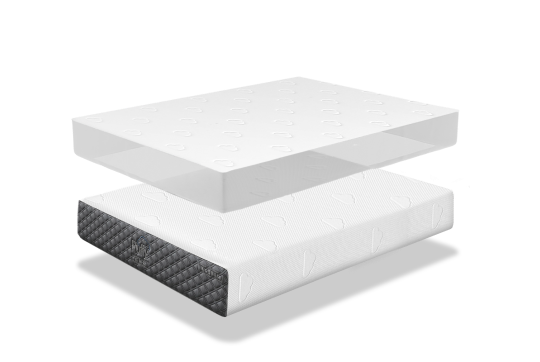Mold in the bedroom, especially on or within a mattress, can be a significant health hazard, triggering allergies, respiratory problems, and other health issues. Ensuring your sleeping environment is protected against mold is crucial for maintaining good health and sleep quality. This article explores effective solutions to combat mold, focusing on the pivotal role of mattress protectors.
Will a Mattress Protector Help If I Already Have Mold?
Once mold has taken hold within a mattress, the primary concern shifts to remediation and ensuring the mold doesn’t spread or affect your health. Here’s how a mattress protector fits into this scenario:
- Limiting Exposure: While a mattress protector itself cannot eliminate existing mold, it can help to encapsulate the mold spores, limiting your exposure. This is particularly relevant for waterproof and encasement-style protectors that fully cover the mattress.
- Hygiene and Health: Using a mattress protector after thoroughly cleaning the mold from the mattress surface can prevent direct contact with any residual spores, contributing to a cleaner sleep environment. However, it’s crucial to address the root cause of the mold and remove as much of it as possible before relying on a protector for further defense.
Can a Mattress Protector Stop Mold from Growing?
Prevention is key in the battle against mold in the bedroom, and a mattress protector plays a significant role in this preventive strategy:
- Moisture Control: The primary function of a mattress protector in preventing mold growth is to keep the mattress dry. Waterproof or water-resistant protectors prevent moisture from spills, sweat, and humidity from penetrating the mattress, which are common causes of mold.
- Breathability: A breathable mattress protector helps regulate temperature and allows air to circulate, reducing the likelihood of moisture buildup that can lead to mold. Materials like bamboo and specialized breathable polyesters are excellent for this purpose.
Pairing a breathable, waterproof mattress protector with a Puffy Lux Mattress can enhance air circulation and moisture protection, significantly reducing the risk of mold formation.
Interested in how Puffy stacks up against other brands? Check out our mattress comparisons: Puffy vs Purple, Puffy vs Nectar, Puffy vs Casper, Puffy vs Leesa, Puffy vs Saatva, Puffy vs DreamCloud, and Puffy vs Tuft and Needle.
Best Mattress Protector for Mold
Selecting the right mattress protector involves balancing moisture protection with breathability, as well as ensuring it covers the mattress adequately:
- Waterproof and Breathable: The ideal mattress protector for preventing mold should be both waterproof to block external moisture and breathable to allow for adequate air circulation. Look for protectors made from materials like bamboo, which offers natural antibacterial properties, or advanced polyesters with moisture-wicking technology.
- Encasement Protectors: For the highest level of protection, consider an encasement mattress protector. These protectors fully encase the mattress, offering comprehensive protection from moisture, dust mites, and other allergens that can contribute to mold growth.
- Material Considerations: Natural materials like wool and cotton can offer breathability and moisture-wicking properties, but they must be paired with a waterproof layer to effectively prevent mold. Synthetic materials designed for moisture protection can also be effective, provided they allow for sufficient air flow.
Integrating a high-quality mattress protector designed to prevent mold with a Puffy Lux Mattress, known for its breathable and hypoallergenic design, can significantly enhance your sleep environment’s cleanliness and healthfulness.
Check out Puffy mattress reviews from real customers and see how we compare with other brands.
Additional Tips for a Mold-Free Bedroom
Beyond choosing the right mattress protector, several strategies can help maintain a mold-free sleep environment:
- Regular Cleaning: Vacuum the mattress and wash your bedding frequently.
- Humidity Control: Use dehumidifiers or air conditioners to keep humidity levels in check.
- Adequate Ventilation: Ensure good air flow in the bedroom, particularly if you live in a damp climate.
Use our store locator to find the closest furniture or mattress store near you and feel the cloudlike comfort of our Puffy Mattress in person.
Conclusion
Combatting mold requires a multifaceted approach, with choosing the right mattress protector being a critical component. By selecting a protector that offers both waterproofing and breathability, you can significantly reduce the risk of mold in your sleep environment. Coupled with proper room ventilation and humidity control, these measures can help ensure your bedroom remains a healthy, mold-free sanctuary.

- Oeko-Tex® Standard 100 certified.
- Hypoallergenic.
- Lifetime warranty.
- 101-night sleep trial.
- Free shipping and returns.












